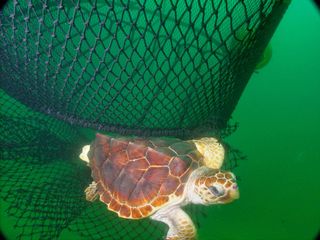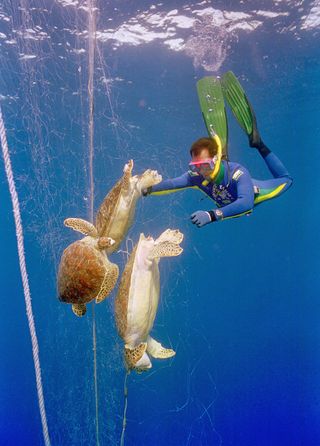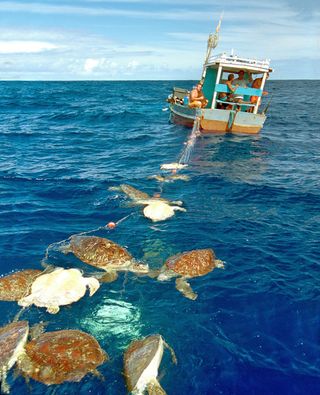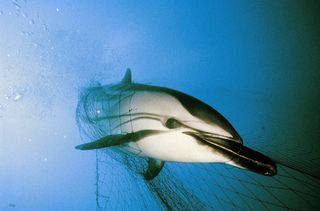
Lawsuit Could Save Thousands of Sea Turtles (Op-Ed)

Amanda Keledjian is a marine scientist at Oceana, the largest international advocacy group working solely to protect the world's oceans. She contributed this article to Live Science's Expert Voices: Op-Ed & Insights.
On March 1, the sea-turtle nesting season officially began in Florida, with the wondrous appearance of leatherback sea turtles returning to lay their eggs. Later this spring, loggerhead and green sea-turtles will follow suit, flocking to Florida's beaches in large numbers. The state is an important destination for these marine reptiles; of the seven different sea-turtle species in the world, five call these warm waters home at some point during their migrations. In fact, Florida's beaches host more nesting turtles than any other state.
Driven by an incredible instinct to return to the same beaches where they themselves were born, these turtles might not know that they are swimming into waters used by shrimp trawlers, one of sea turtles' most dangerous and deadly obstacles. Shrimp trawlers in the Gulf of Mexico and the U.S. southeast Atlantic kill or injure an estimated 53,000 sea turtles — every year — as the ships tow huge nets the width of football fields slowly through the water, trapping almost everything in their wake.

These nets pose a significant danger to the sea turtles, a vulnerable population. Sadly, all five sea-turtle species are considered threatened or endangered with extinction in the United States.

This is why, last month, Oceana and three other groups filed a notice of intent to sue the U.S. federal government, urging it to accurately analyze the impacts of shrimp trawls on sea turtles. In 2012, the U.S. National Marine Fisheries Service (NMFS) proposed a regulation that would require all trawl nets to use Turtle Excluder Devices (TEDs), which create an opening to allow turtles to escape once they have been captured. Unfortunately, NMFS withdrew the proposal after the fishing industry mounted fierce opposition, leaving the regulations to default back to the status quo.
This action meant bad news for sea turtles, since fishermen do not comply with existing rules to limit the amount of time the nets are towed through the water. Shorter tow-time requirements are designed so that any captured sea turtles can be safely released before they drown. But these rules are difficult to enforce, and studies have shown that a large percentage of fishermen do not comply with them.

Better environmental analysis and stricter enforcement by NMFS could easily save thousands of sea turtles every year. The U.S. government is currently failing in its duty to ensure that federally authorized activities (including fishing) do not jeopardize the continued existence of endangered and threatened species, as required by law under the Endangered Species Act. Sea turtles are vital for healthy marine and coastal ecosystems, helping to maintain productive coral reef ecosystems and transporting essential nutrients from the ocean to beaches and coastal dunes.
Sign up for the Live Science daily newsletter now
Get the world’s most fascinating discoveries delivered straight to your inbox.

Turtle nesting in Florida will continue into October, possibly stretching further into the fall. To ensure that these animals safely reach their nesting beaches, NMFS must assess the harmful impacts of shrimp trawls, set limits on the number of sea turtles injured and killed, and require steps to ensure that those limits are not exceeded. Those measures could include mandating TEDs or instituting closed areas when sea turtles are present. Without accurate and unbiased analysis of the effects of these and other fishing activities, the recovery and continued existence of these majestic marine animals will be at risk into the future.
The views expressed are those of the author and do not necessarily reflect the views of the publisher. This version of the article was originally published on Live Science.
